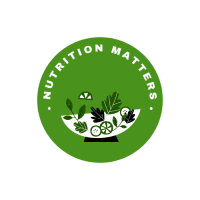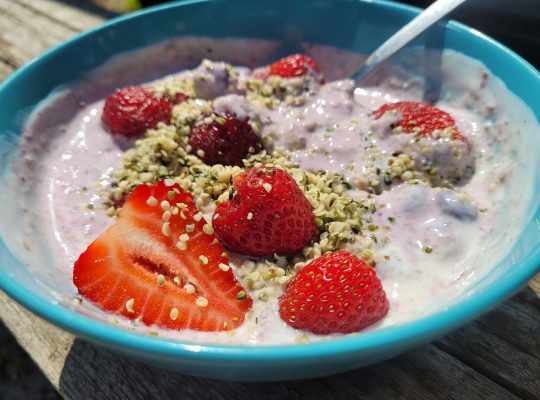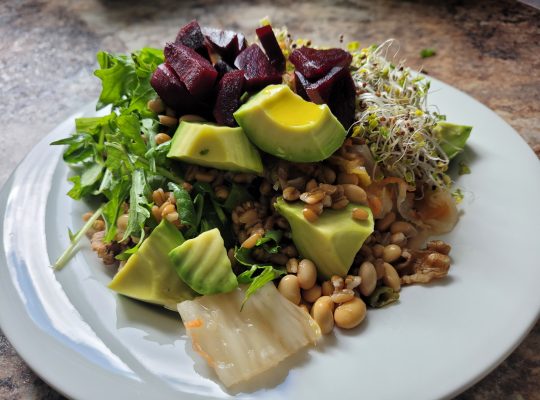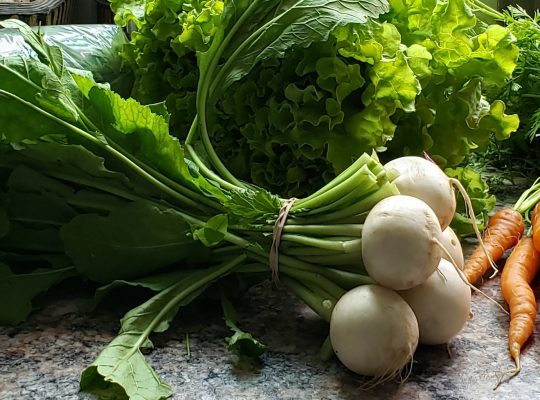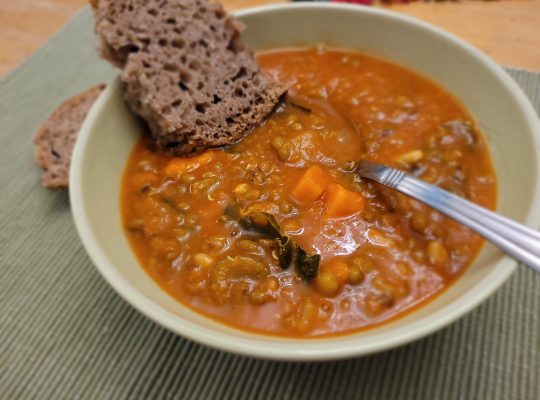Most people (I’m in this crowd, how about you?) can attest to their digestive habits changing while on vacation. Our bodies love routine and clearly, routine is disrupted when we hit the road.
Things that can cramp your style (pun not intended)
You may experience constipation due to lack of familiar territory (our brains are connected to the gut after all), eating less fibre and/or drinking less water because you may or may not have a bathroom nearby.
You may also want to be able to maintain some good habits (consuming whole foods rich in nutrients and fibre) without breaking the bank, while also indulging a bit because that’s part of a good trip too, more so when traveling with kids.
Let’s stick to traveling by car for this one and tackle other forms later (backpacking, traveling by plane, etc.). Here are some suggestions to make good food options a reality while traveling say for a long weekend which is what our family did recently. With two teenagers in tow (aka eating machines) it becomes an interesting challenge. But doable. Ideally, you either rent a place with a small kitchen outfitted with a few pots and pans or if camping, bring your own to cook in.
Some things to keep in mind
- Go for whole foods instead of processed. This ensures that you get enough fibre to keep your gut bugs happy, which inherently makes you happy.
- Drink water: it is best when traveling but do supply fun drinks too such as kombucha (some good bacteria). Another is carbonated water (flavoured if that’s what the crew asks for – you’re on vacation after all!).
- If you eat late at night you might find that it disrupts your sleep, which will then affect your eating the next day and particularly spike your cravings.
- Ditto for late-night drinks. Aside from what’s generally recommended (alcohol is mostly harmful), drinking later in the day can reduce sleep quality. Choose wisely.
- Locate a grocery store as soon as you get to your destination and get the more perishable items you can keep in the fridge to complement the foods you brought from home (see below).
The practical stuff
Option 1: Dehydrated meals whether homemade (breakfast, lunch and dinner and kudos to you of you’re that organized!) or store-bought camping meals (this can get expensive for a family). See below for snacking options.
Option 2: Any or all of them, depending on needs and taste:
- Whole grain such as couscous with dry herbs and spices, which you can add canned beans or lentils too, and eat with whatever veggies you can get your hands on (peppers, tomatoes, cucumber).
- Canned fish (small fish such as sardines, oysters or mussels).
- A loaf of sliced whole grain sourdough (it keeps well for many days) can be paired with various toppings including smoked tofu, mashed chickpeas with lemon, salt and spices of your choice or mustard, fresh veggies.
- Breakfast foods: muesli mix (which you can make yourself with oats, raisins or chopped dates, nuts and seeds, unsweetened dry coconut). Add hot water to soften and top with yogurt, banana and nuts/seeds/etc. Granola is another option and because I mentioned indulgences, you can try a more decadent chocolatey one like Love Crunch or Chocolate Peanut by Nature’s Path (no affiliation).
- Snacks: Trail mixes of your liking – make your own and have it ready for snacking. You can make individual bags for every member of the family. Add some fresh fruit that is not very susceptible to easy bruising (apples, citrus fruit).
- Also snacks: Veggies that can be transported without going bad, such as carrots, peppers, cucumbers, jicama, kohlrabi. Have them washed and ready to slice and eat.
- Toss a few soups that need little to no cooking (ramen noodles). Yes, an occasional indulgence because teenagers are that way.
Extra tip: instead of opting for lesser quality restaurant fares, eat what your bring from home and splurge on a couple of good meals. Aim for locally-owned and of course, relying on local foods as much as possible.
There you have it. Please feel free to share your thoughts. What works for you and yours when traveling?
